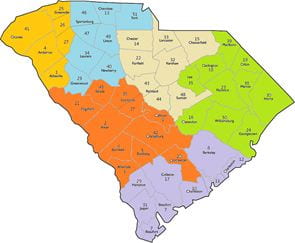According to the Institute for Electrical and Electronics Engineers, 80 percent of future professions will require science, technology, engineering and math (STEM) expertise. It’s a tall order that can only be filled through the collective efforts of industry-university partnerships, such as the Synopsys partnership with San Jose State’s College of Engineering.
For more than ten years, the Synopsys Integrated Circuit Design lab has been serving college students in STEM programs. The lab enables engineering students to do full custom analog and digital Integrated Circuit design for both academic and research purposes. Synopsys employee and SJSU Engineering alumna, Cleo Costello (’85 and ’87), played a key role in building the lab in conjunction with Dr. Belle Wei, Carolyn Guidry Chair, Engineering Education & Innovative Learning and former Dean, SJSU Charles Davidson School of Engineering; and Chair, Center for Advancing Women in Technology.
“The relationship between San Jose State University and Synopsys is symbiotic. We have a shared purpose to advance more women from diverse backgrounds in STEM careers. The goal is systemic and sustained change.”
— Dr. Belle Wei
Annually, Synopsys participates in a variety of SJSU engineering career fairs, and the Engineering Awards banquet. Synopsys is a sponsor of the Silicon Valley Women in Engineering Conference (WiE), where students learn, network and build community. WiE is the largest event of its kind in Silicon Valley and is produced in collaboration with the Society of Women Engineers at San Jose State University.
In addition, Synopsys continues to explore opportunities for mentoring and sponsorship of formative activities for SJSU students, including engagement with the Society of Latinx Engineers and other organizations that support women and diversity in STEM. In the past three years, Synopsys has hired more than 50 SJSU students for internship roles. Synopsys believes that hiring a diverse workforce and working to build a strong community where every voice is heard fosters innovation and drives better business results.
SJSU undergrad and grad students are encouraged to apply for Synopsys Internships to hone their tech skills and gain valuable exposure to professional teams, projects, and workplace environments. Interns at Synopsys learn how to formulate goals, present ideas, and position themselves as individuals with unique strengths as they progress toward graduation and career pursuits. Along with a competitive salary, they gain exposure to innovative EDA, semiconductor IP, and software security technologies as well as real-world work experience and research opportunities alongside engineering and business experts, Synopsys executives, and community leaders.
SJSU is not only a leading supplier of engineering talent to Synopsys and other Silicon Valley tech companies, but as a member of the Technology Pathways Initiative, it is also one of California’s first universities to establish interdisciplinary computing degree programs to attract more college women to STEM studies and careers.
Synopsys’ Commitment to Diversity
To power the New Era of Smart Everything, Synopsys aims to solve complex challenges that impact every sector of the modern world and people from all walks of life. “Synopsys Inclusion & Diversity initiatives aim to attract and retain a pool of engineering talent that reflects the diversity of our world,” said Costello. “We are committed to being leaders in hiring and developing talent among women and other underrepresented groups.”
“There’s a need for more balance in STEM degree programs and career opportunities; from engineering roles, to leadership positions, to boardrooms. The balance should address gender, ethnicity and socioeconomic status. Achieving better balance will strengthen companies, industries and society. This is our goal at Synopsys, design Inclusion and Diversity initiatives that help achieve better balance.”
— Chi-Foon Chan, President and co-CEO, Synopsys Inc.
We know a pool of engineering talent is needed to fuel tech innovations that drive economic growth and prosperity and underpin many aspects of social well-being. But when we look into that pool, does it reflect the world we serve and all its diversity? The answer is, not yet; there’s more that can be done.
Get Involved
Synopsys and the Charles W. Davidson College of Engineering want to help students to make the transition from college to career:
- Attend the WiE 2020 Conference or any other conference for women
- Apply for an internship at Synopsys
- Join the Society for Women Engineers at SJSU or other minority groups on-campus
- Learn about university participation in the Technology Pathways Initiative at the Center for Advancing Women in Technology

